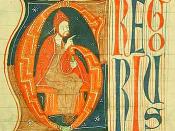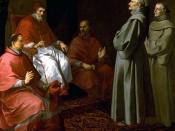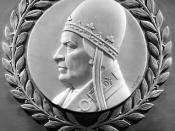Running head: MEDIEVAL HERESY AND INQUISITION TORTURE 1
MEDIEVAL HERESY AND INQUISITION TORTURE
Medieval Heresy and Inquisition Torture
The Catholic Church was worried. Was the devil stealing people's souls? How would you know? So, to fight the devil the church founded a new court. The Inquisition. The Inquisition were those priests whose job it was to find and punish anyone who was against the church or working with the devil. When the sins of the Catholic Church are recited (as they so often are) the Inquisition figures prominently. People who worked against the church a heretic, and any action or speech against the church was called heresy. The Inquisition could place people under arrest and question them using torture to get them to confess to heresy. If you confessed right away before torture, you would be punished but you could be redeemed. If you didn't confess, you could be tortured until you did confess.
How could a person win? Well, you couldn't.
The Medieval Inquisition was the institution of the Roman Catholic Church for combating or suppressing heresy. After the Roman Church had consolidated its power in the early Middle Ages, heretics came to be regarded as enemies of society. The crime of heresy is defined as an opinion, disbelief or deliberate denial of an article of truth of the Catholic faith. At this time, there was a sense of Christian unity among townspeople and rulers alike, and most of them agreed with the Church that heretics seemed to threated society itself.
However, the repression of heresy remained unorganized, and with the large scale heresies in the 11th and 12th centuries, Pope Gregory IX instituted the papal inquisition in 1231 for the apprehension and trial of heretics. The Inquisition was established as a special court to stop the spread of...


